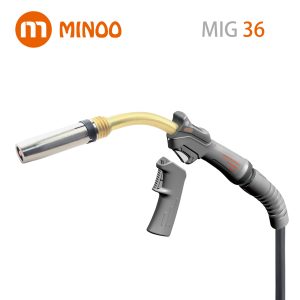MIG/MAG welding, standing for Metal Inert Gas and Metal Active Gas welding respectively, is a versatile and widely used welding process. This article will delve into the typical applications of MIG/MAG welding, highlighting its efficiency, cost-effectiveness, and broad utility in various industries.
Overview of MIG/MAG Welding
The Process
MIG/MAG welding uses a continuously fed wire electrode and an inert or active gas to shield the weld pool from contaminants. This method is known for its high welding speeds and smooth, clean welds, making it a preferred choice for both industrial and DIY projects.
Key Features
- Power Requirements: MIG/MAG welders generally operate at a power range of 100-300 amps.
- Efficiency: The process is highly efficient due to continuous wire feeding, offering faster welding times compared to other methods.
- Material Compatibility: Suitable for a range of materials including steel, stainless steel, aluminum, and nickel alloys.
- Weld Quality: Offers high-quality welds with minimal defects.
- Cost-Effectiveness: MIG/MAG welding is cost-effective due to its high speed and efficiency, reducing labor costs.
Applications of MIG/MAG Welding
Automotive Industry
- Bodywork and Chassis Fabrication: Ideal for welding thin materials used in car bodies, ensuring strong, aesthetically pleasing welds.
- Repair Work: Commonly used for automotive repair due to its speed and ability to produce high-quality welds on a variety of metals.
Construction
- Infrastructure Projects: Used in constructing bridges, buildings, and other structures due to its efficiency and compatibility with a variety of metals.
- Metal Fabrication: Suitable for fabricating metal components and structures with high precision and strength.
Manufacturing
- Production Lines: Widely used in manufacturing processes due to its speed and ability to automate, significantly enhancing production efficiency.
- Robotics: Often integrated into robotic welding systems for mass production.
Aerospace
- Aircraft Assembly: Employed in the assembly of aircraft components, particularly for aluminum and its alloys, known for their lightweight and strength.
Art and Sculpture
- Metal Artwork: Artists and sculptors use MIG/MAG welding for creating metal art due to its precision and ability to handle different metals.
DIY and Home Projects
- Home Repairs and Projects: Popular among DIY enthusiasts for home repairs and creative projects due to its versatility and ease of use.
Advantages and Disadvantages
Advantages
- Versatility: Can be used with a wide range of metals and thicknesses.
- High Speed and Efficiency: Reduces welding time and increases productivity.
- Ease of Use: User-friendly, making it accessible for beginners and professionals alike.
- High Weld Quality: Produces clean, strong welds with a good appearance.

Disadvantages
- Cost: Initial setup can be expensive due to the need for a welding machine and gas cylinders.
- Limited Portability: The gas cylinder reduces the portability of the welding setup.
- Sensitivity to Wind: Outdoor welding can be challenging as wind can disrupt the gas shield.
For more detailed information on MIG/MAG welding, visit MIG/MAG Welding Equipment.